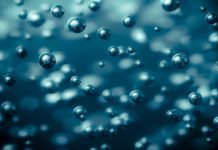Atmospheric water harvesting technology delivers lifesaving water to arid regions through hygroscopic gel and salts
Researchers from Shanghai Jiao Tong University in China have unveiled a new solar-powered atmospheric water harvesting technology that could help more than 2.2 billion people living in water-stressed countries.
Addressing water scarcity
The research presents a promising solution to address the critical issue of water scarcity and related disasters that claim 3.5 million lives annually. The researchers synthesised super hygroscopic gel using plant derivatives and hygroscopic salts.
Overcoming previous challenges faced by researchers injecting salt into hygroscopic, the team achieved a remarkable balance even with 5 grams of salt injected into 1 gram of polymer, resulting in the gel maintaining good swelling and salt-trapped properties, preventing salt leaks and ensuring sustained water absorption capacity.
This is remarkably simple and cost-effective to prepare; this hygroscopic gel exhibits water absorption capabilities. In dry conditions, a kilogram of dry gel can absorb 1.18 kilograms of water, while it can absorb 6.4 kilograms in humid environments. This makes it ideal for addressing diverse water needs, from household drinking to industrial and hygienic water.
Recovery of desorbed water
The researchers complemented the gel with a prototype featuring desorption and condensation chambers configured in parallel. Leveraging a turbofan in the condensation chamber, they achieved over 90% recovery of desorbed water.
In a real-world outdoor prototype demonstration, the system released adsorbed water even during weak sunlight, showcasing its reliability and efficiency.
The technology is not limited to water production alone. The researchers envision broader applications, including dehumidification, agriculture irrigation, and thermal management for electronic devices.
Renewable energy sources
The team is actively working towards achieving simultaneous adsorption and desorption using renewable energy sources, aiming to maximise the daily water yield per unit of adsorbent and further optimise the system’s performance for practical applications in water generation.
This breakthrough technology offers hope for the devastating impacts of water scarcity. Its potential to provide a sustainable and renewable water source in some of the driest regions on earth could save lives and open avenues for addressing broader challenges related to water availability and utilisation.














